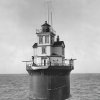A note regarding the excellent Sept. 17 letter to the editor from Carolyn and Richard Claypoole about Dennis Forney’s Sept. 10 article, “Carbine used at Little Bighorn makes its way to Lewes,” concerning Custer’s last stand and Forney’s great article itself. The events and subjects discussed have a lot in common with those in other parts of the world that happened about the same time as Custer’s debacle that took place in 1876, the Centennial of the U.S., and the same year in which Alexander Graham Bell made the first telephone call (March). Kind of hard to believe we were still fighting Indian wars in that “modern world” context. Then again…
Three years after Custer, the British fought two related battles in South Africa against the Zulu Tribe, which arguably had the best “non-modern” army in the world. Every Zulu man was trained in combat and not allowed to wear shoes so that their feet could endure far more trauma than those of other people.
The British had, for a while, been kind of allied with the Zulus in their joint disdain for the Afrikaner Europeans of Dutch descent as well as Huguenots, or French of Protestant descent who had come to South Africa in the 1600s.
Over time, as the British moved farther into South Africa, conflicts arose with the Afrikaners who were forced to leave where they had lived for several centuries and moved into the interior of South Africa. Those frictions grew, and several wars were fought between the two, with the last being the Boer War of the first decade of the 20th century.
While those frictions increased, the British, who had not bothered the Zulus, made an about-face. The Zulus had prime land in Natal, South Africa, and the Brits began to make the kind of demands that were made of Native Americans in the U.S. – e.g., “Give up your land.”
That led to some cataclysmic military engagements between the Brits and the Zulus. Two of the most famous occurred in January 1879. The Zulus finally had their fill of being pushed around and went on the warpath. One battle (Rorke’s Drift) was fought on the same day as another battle (Isandlwana) took place about 10 miles away.
Rorke’s Drift is the subject of the epic movie, “Zulu,” with Michael Caine and concerns about 100 British (most of whom I think were Welsh) soldiers holding off about 4,000 Zulus. More Victoria crosses were awarded for that engagement than at any other time. Isandlwana, which is the subject of “Zulu Dawn” (made about 20 years after “Zulu” by the same producers), concerns around 2,000 British soldiers being wiped out by about 20,000 Zulus.
The dynamics of Isandlwana were similar to Custer and the Little Big Horn three years earlier. Both Custer and the British could have taken Gatling guns (the first “machine” guns) and repeating rifles but didn’t. Martini-Henry rifles – lever action and single shot like the Springfield rifles of Custer’s men – were no match for the overwhelming number of Zulus, some of whom had some outmoded guns but whose tidal wave of warriors washed over everything with their assegais (stabbing spears).
Isandlwana and the Little Big Horn, so far away from each other but with so much in common and with so little time between each other, were disasters because of vanity on the part of the “civilized” whites. Did the Brits learn anything from Custer? Pride goeth before a fall.
There is more to the Little Big Horn than is generally remembered. Troops under Major Marcus Reno got to the area before Custer and found hundreds of “hostiles.” He had his men dismount and fight as infantry. But things went badly and he ordered his men to remount and they rode hell bent for leather to high ground where they waged a battle of defense, along with the newly arrived troops under Capt. William Benteen. A number survived. But that for another time … Maybe a partial parallel to the battles of Rorke’s Drift and Isandlwana three years later in South Africa.
A personal note: On the night of Jan. 22, 1979, I was reading H. Rider Haggard’s (author of King Solomon’s Mines and She, and featuring Haggard’s legendary hero, Alan Quatermain) novel “Finished.” A chapter in the book that I read that night deals with Isandlwana. The next day, I read in the newspaper about the previous day having been the 100th anniversary of the two great battles in South Africa. I had had no idea. I went by a bookstore and saw a just-published copy of the London Times in the window. “Isandlwana!” and a full-color painting of the battle on the cover. Needless to say, I grabbed that copy and still have it. All of this pure chance…

















































